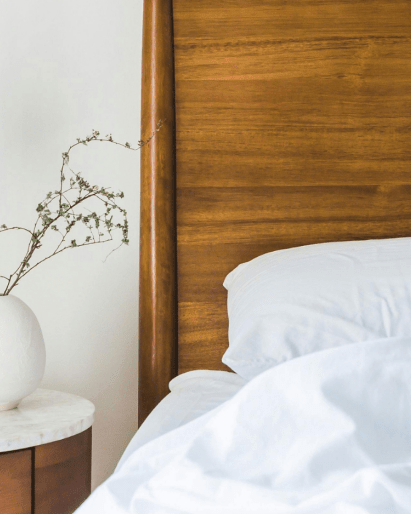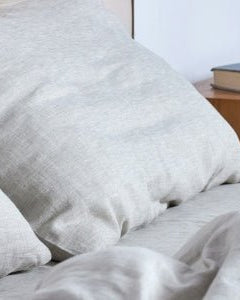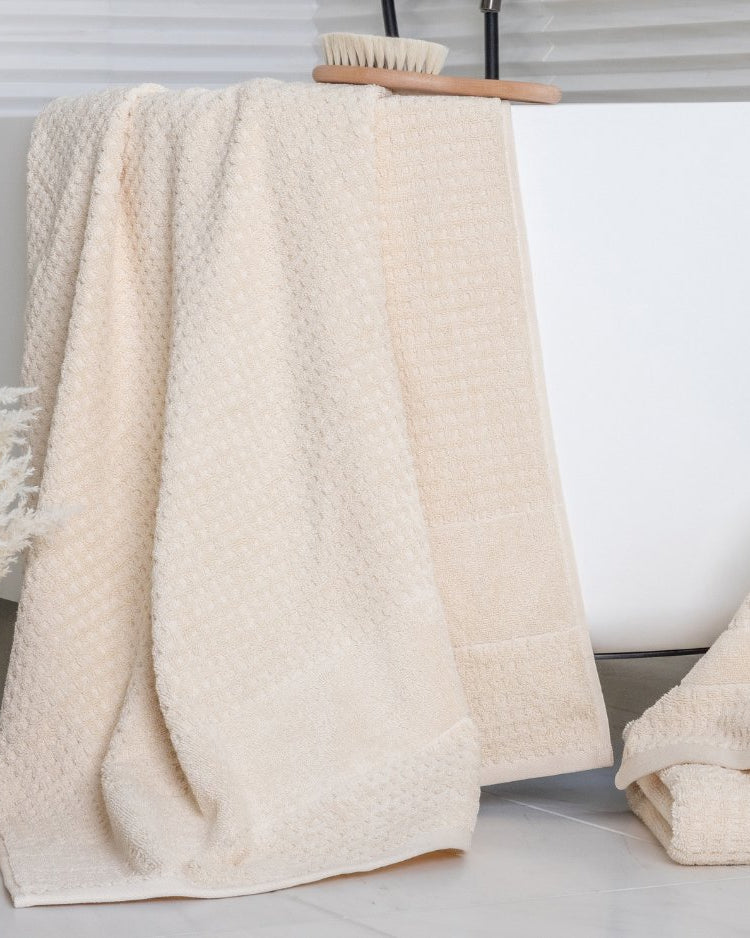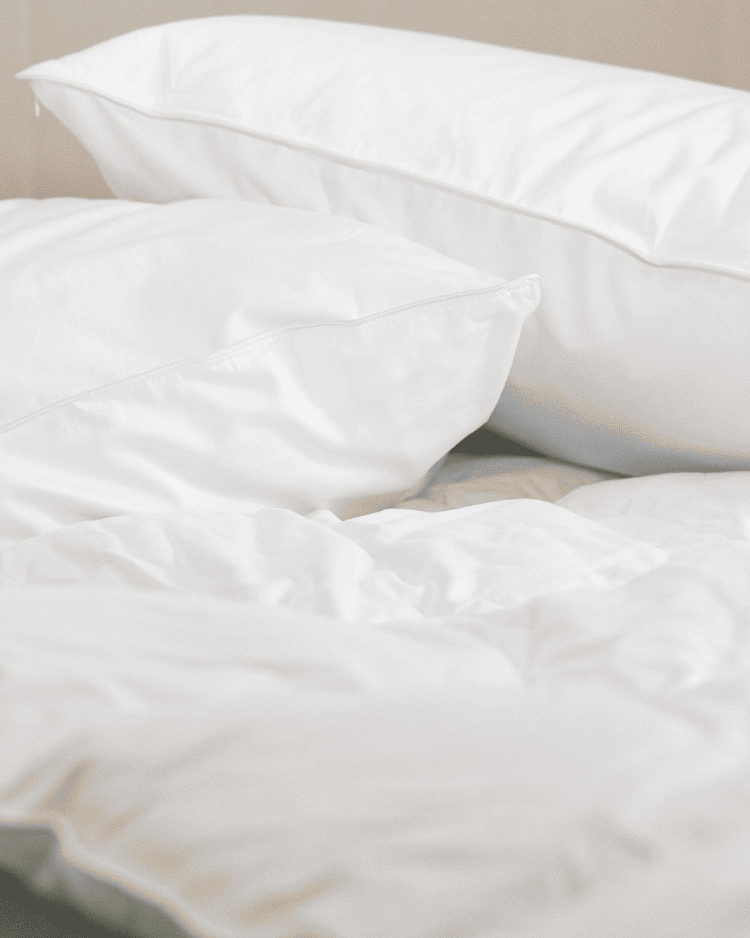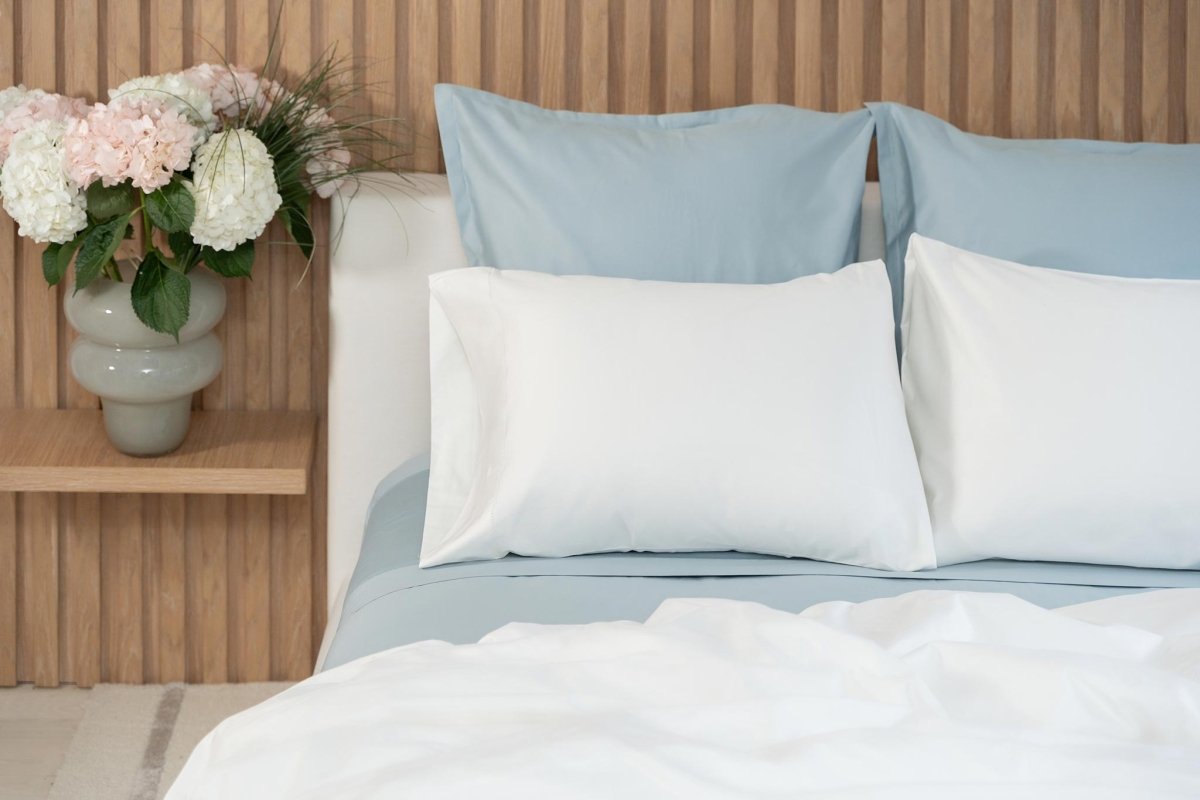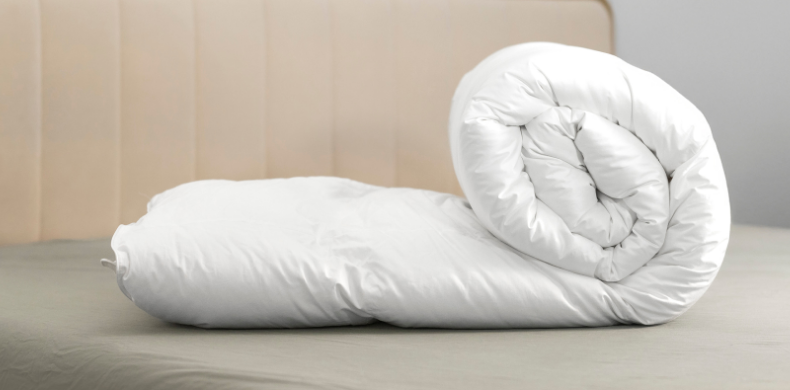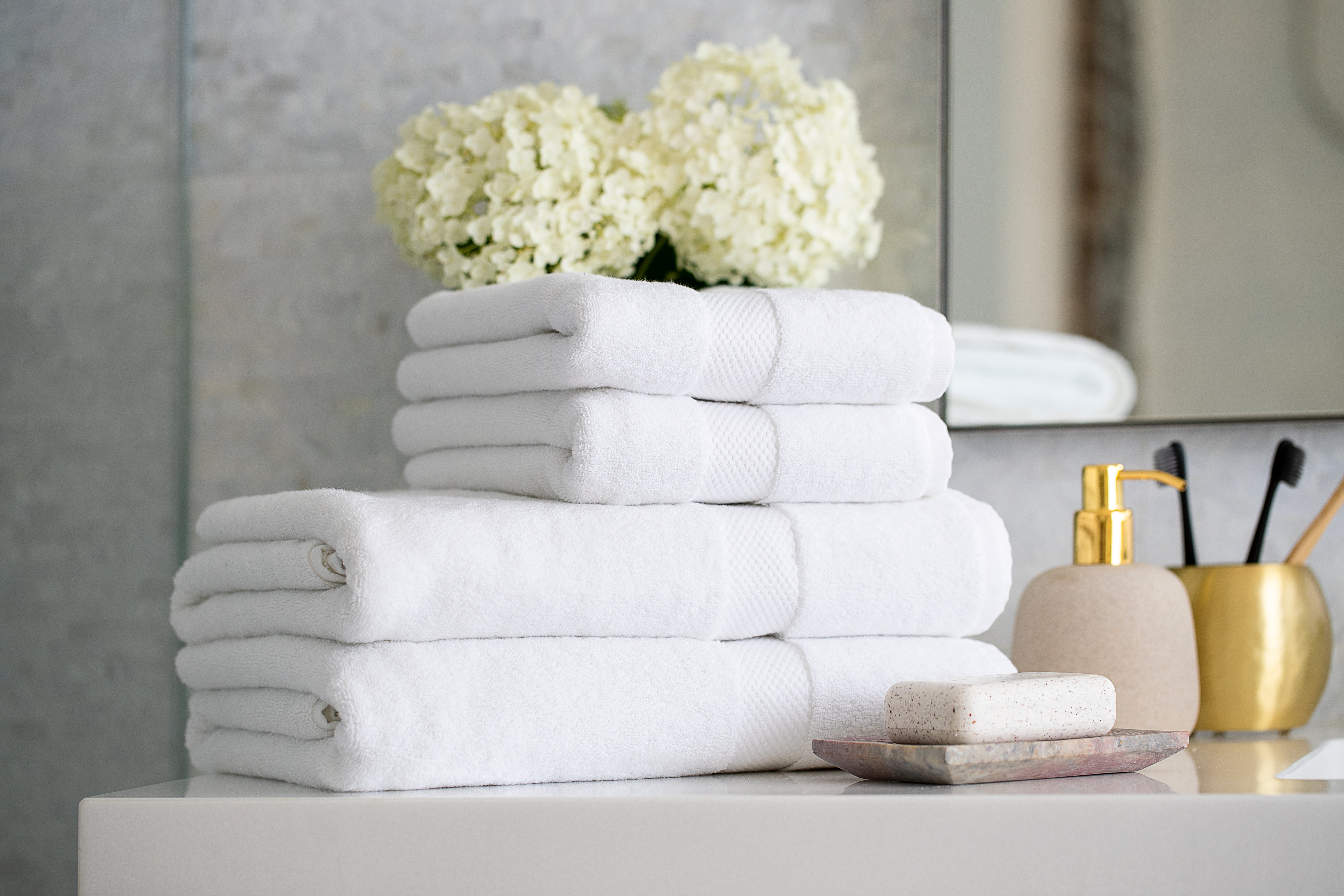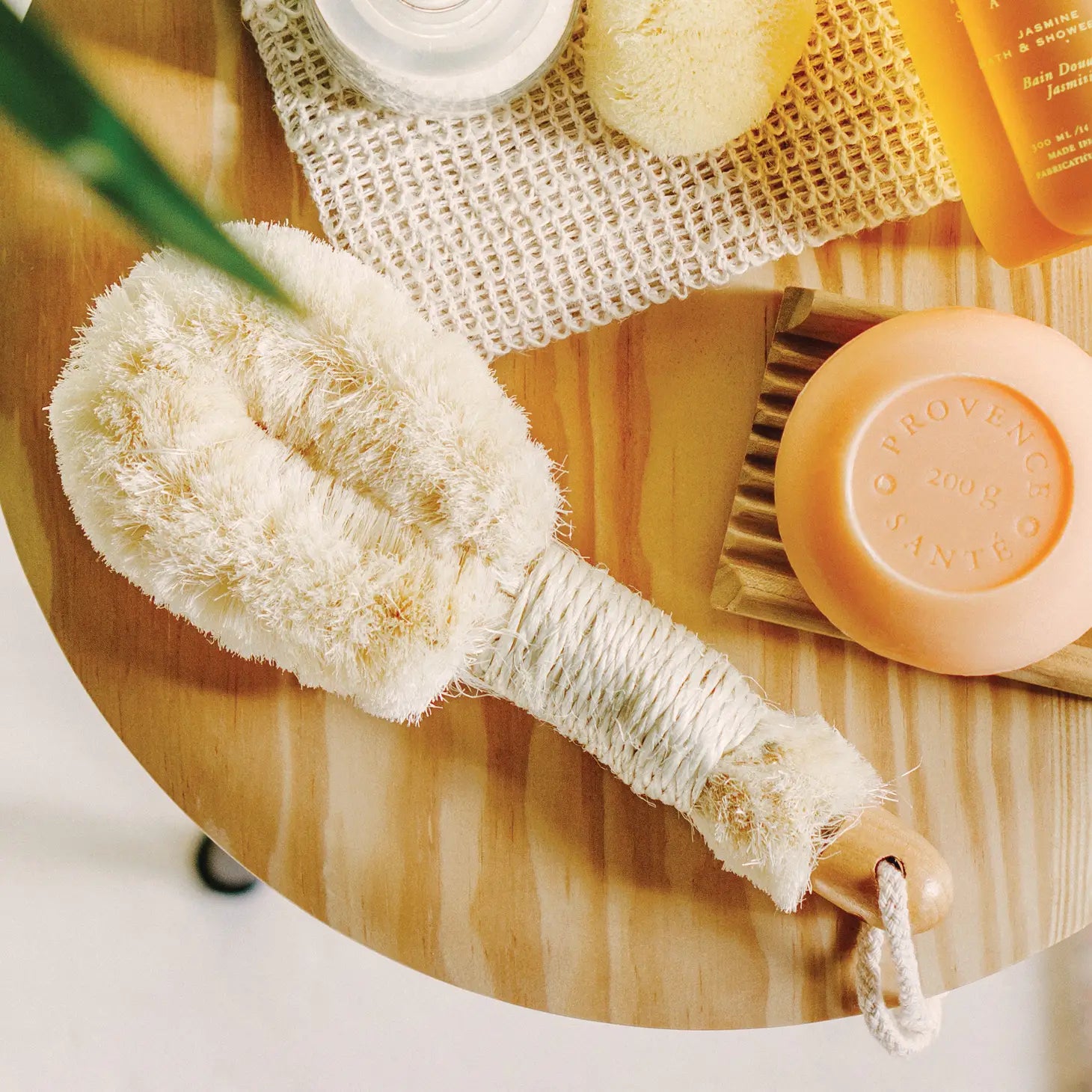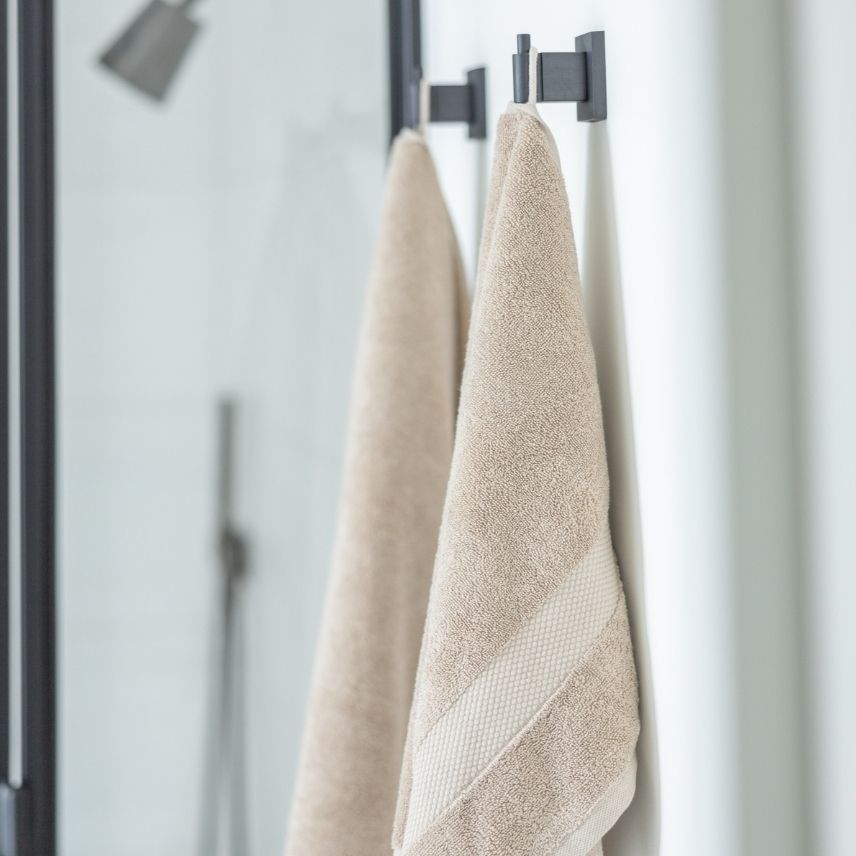If you're used to buying sheet sets, you're probably familiar with fitted and flat sheets. But if you're someone who prefers to mix and match, you might be wondering:
- What exactly is the difference between fitted and flat sheets?
- Why do we use flat sheets?
- Do we need both types of sheets?
If you've ever pondered these questions, you've landed in the right place. We're here to illuminate the nuances and functions of flat and fitted sheets, helping you make informed decisions about your bedding choices for every bedroom and every sleeper in your home.
The distinction between flat and fitted sheets lies in their functionality in the bedding world. A flat sheet is a top sheet, while a fitted sheet features elastic corners, ensuring a snug fit around the mattress.
Before the invention of fitted sheets in 1959, making the bed required two flat sheets, pillows, pillowcases, blankets, and comforters. However, the bottom sheet would often come untucked without the secure grip of fitted sheet corners, leading to frequent adjustments throughout the night.
With the introduction of fitted sheets, bed-making became more efficient. The elasticized corners kept the sheet firmly in place for several nights of uninterrupted sleep. This innovation simplified the bed-making process and provided a more comfortable and restful sleep experience.

Using both styles together is expected when choosing between fitted and flat sheets, as they offer unique benefits. Here's what to consider:
Pros and Cons of Fitted Sheets:
Pros:
- Fitted sheets are excellent at staying in place, ensuring a neatly made bed.
- They shield your mattress from dust, dirt, and pet hair.
Cons:
- Fitted sheets can sometimes become tangled in the dryer, requiring multiple drying cycles.
Pros and Cons of Flat Sheets:
Pros:
- Flat sheets act as a barrier between your body and your comforter or duvet, prolonging the cleanliness of your bedding.
- On warmer nights, a flat sheet is a lightweight layer that offers coverage while keeping you cool.
- They are easy to wash and dry.
Cons:
- Flat sheets may not stay in place when used as the base sheet on your mattress.
Ultimately, choosing between fitted and flat sheets depends on your preferences and priorities for comfort and convenience.
Still undecided between a fitted or a flat sheet? Here are some commonly asked questions to help you make your choice:
Do You Sleep on a Fitted Sheet or a Flat Sheet?
- Most sleepers lie directly on top of a fitted sheet and beneath the flat sheet. The fitted sheet snugly covers the mattress, ensuring it stays in place as you move during the night. A flat sheet is a lightweight layer over your body for a comfortable night's sleep.
What Is the Difference Between Fitted and Deep-Fitted Bed Sheets?
- Mattresses come in various thicknesses, from eight inches to as much as eighteen inches. Many sheet manufacturers offer fitted and deep fitted sheets to cater to this range, the latter featuring an extra-deep pocket. Fitted sheets are suitable for thinner mattresses, while deep fitted sheets are designed for thicker ones.
Can You Use a Flat Sheet as a Fitted Sheet?
- A flat sheet can be a temporary solution if you're running low on clean fitted sheets. Simply center the flat sheet on your mattress, ensuring enough overhang on each side to tuck the corners underneath. Folding the square corners will help keep the sheet secure.
How Do You Fold a Fitted Sheet?
- Lay the fitted sheet flat with the gusseted portion facing up. Hold the sheet at its widest points and fold it in halves or thirds, ensuring the gussets tuck within the folds. Then, fold the sheet down into a smaller rectangle or square for easy storage.

